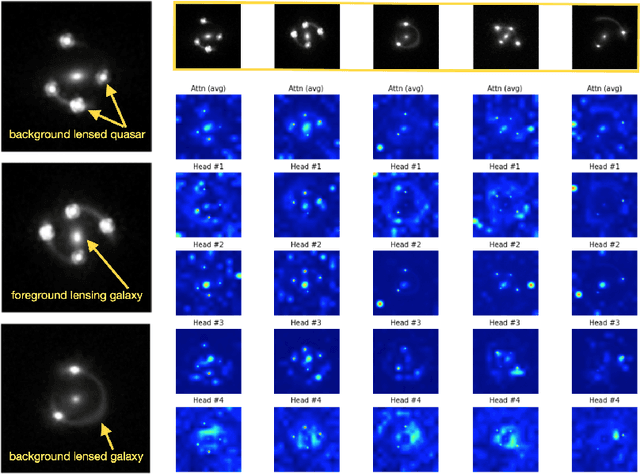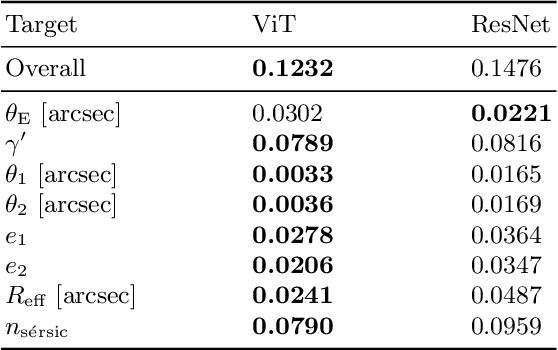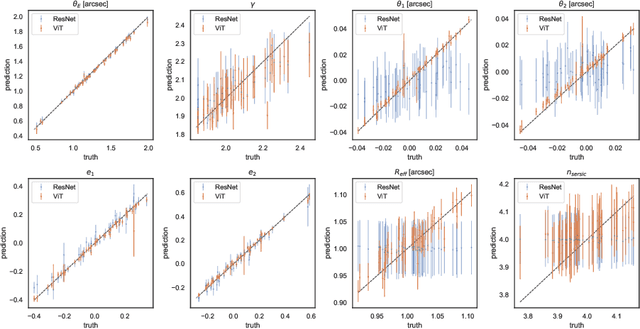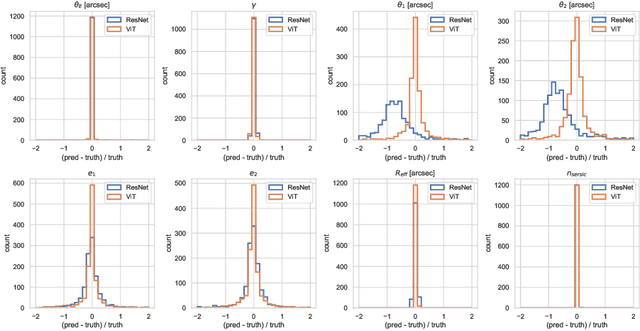Chia-Jung Hsu
Denoising Diffusion Probabilistic Models to Predict the Density of Molecular Clouds
Apr 04, 2023Abstract:We introduce the state-of-the-art deep learning Denoising Diffusion Probabilistic Model (DDPM) as a method to infer the volume or number density of giant molecular clouds (GMCs) from projected mass surface density maps. We adopt magnetohydrodynamic simulations with different global magnetic field strengths and large-scale dynamics, i.e., noncolliding and colliding GMCs. We train a diffusion model on both mass surface density maps and their corresponding mass-weighted number density maps from different viewing angles for all the simulations. We compare the diffusion model performance with a more traditional empirical two-component and three-component power-law fitting method and with a more traditional neural network machine learning approach (CASI-2D). We conclude that the diffusion model achieves an order of magnitude improvement on the accuracy of predicting number density compared to that by other methods. We apply the diffusion method to some example astronomical column density maps of Taurus and the Infrared Dark Clouds (IRDCs) G28.37+0.07 and G35.39-0.33 to produce maps of their mean volume densities.
Strong Gravitational Lensing Parameter Estimation with Vision Transformer
Oct 09, 2022



Abstract:Quantifying the parameters and corresponding uncertainties of hundreds of strongly lensed quasar systems holds the key to resolving one of the most important scientific questions: the Hubble constant ($H_{0}$) tension. The commonly used Markov chain Monte Carlo (MCMC) method has been too time-consuming to achieve this goal, yet recent work has shown that convolution neural networks (CNNs) can be an alternative with seven orders of magnitude improvement in speed. With 31,200 simulated strongly lensed quasar images, we explore the usage of Vision Transformer (ViT) for simulated strong gravitational lensing for the first time. We show that ViT could reach competitive results compared with CNNs, and is specifically good at some lensing parameters, including the most important mass-related parameters such as the center of lens $\theta_{1}$ and $\theta_{2}$, the ellipticities $e_1$ and $e_2$, and the radial power-law slope $\gamma'$. With this promising preliminary result, we believe the ViT (or attention-based) network architecture can be an important tool for strong lensing science for the next generation of surveys. The open source of our code and data is in \url{https://github.com/kuanweih/strong_lensing_vit_resnet}.
 Add to Chrome
Add to Chrome Add to Firefox
Add to Firefox Add to Edge
Add to Edge